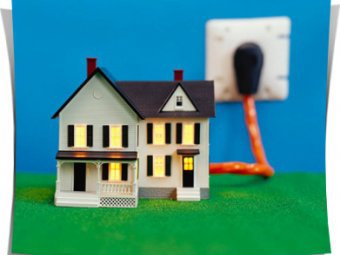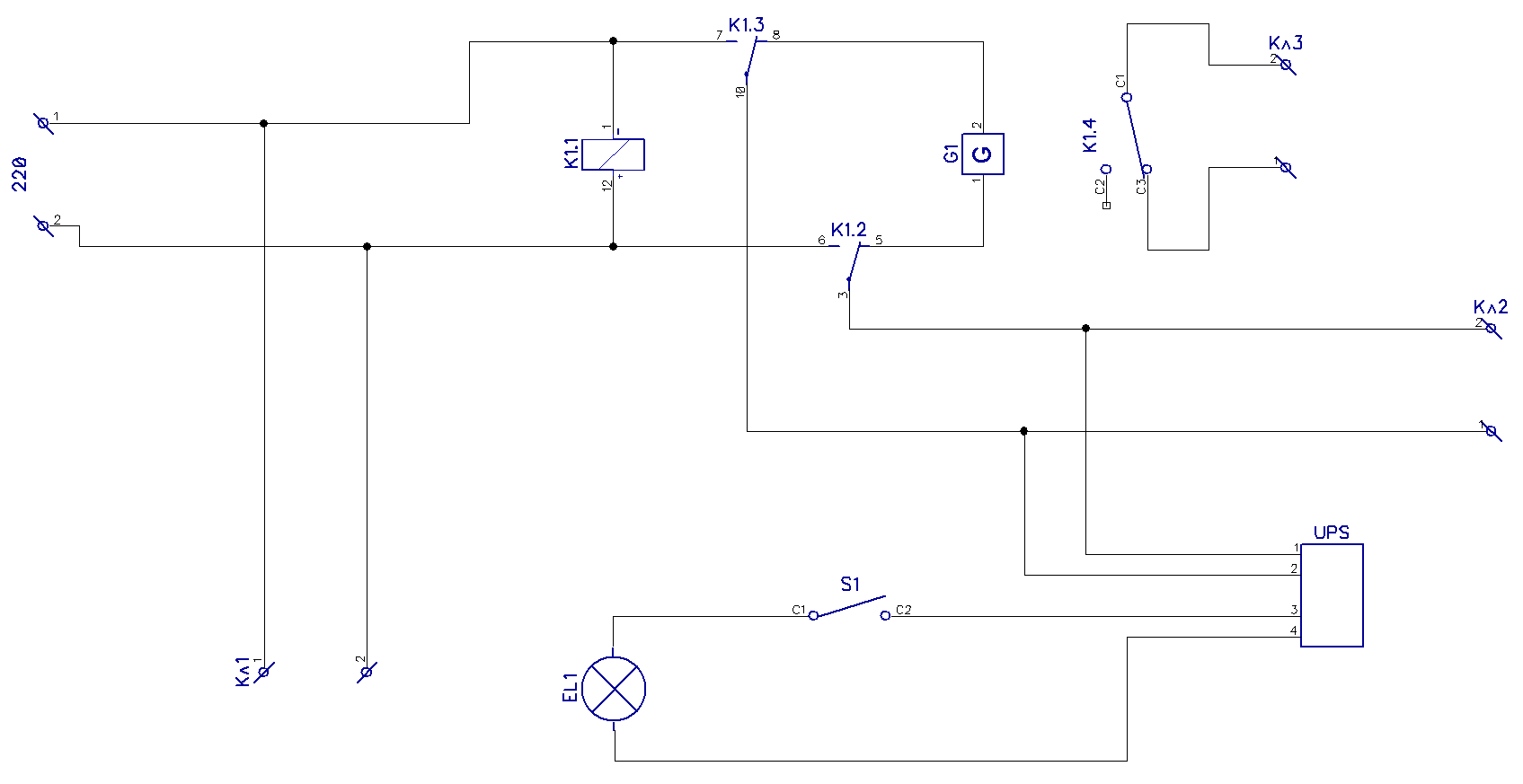Private house power supply

In this article I want to start describing the concept of a smart home in my understanding and consider some aspects of its implementation. I must make a reservation right away that I practically do not see the application of the concept of “Smart Home” to an apartment, since there are practically no systems requiring automation in it. A completely different thing is a private house. It contains many systems that can and should be automated - from water supply to garden lighting. So, my definition. A smart home is a set of automatic systems that operate with the minimum participation of its inhabitants, while ensuring maximum comfort, safety and energy conservation. Moreover, the implementation should be as simple and affordable as possible.
I will start with the implementation of energy supply at home.
Backup power supply at home
Unlike an apartment, a house is much more dependent on the availability of electricity, because in its absence we automatically lose almost all systems - lighting, heating, ventilation, hot water and often even water supply if a pump station is used. Therefore, in the framework of the comfort of a smart home, it is necessary to provide backup power supply. The simplest solution is to use a standalone generator. But it still needs to be connected correctly, so that when the power is restored, nothing burns out, select its power, so as not to overload and decide on its launch. Of course, you can install a power plant with a capacity of 10 kW, with automatic start and with matching schemes with the power grid, but its price is prohibitive. That and install it is not so simple. Well, the question remains, when to start it - immediately when the power is turned off, after half an hour or manually. After all, walking with a flashlight in anticipation of a start is somehow not very comfortable, and instant start is often uncomfortable, especially at night or with a 15-minute shutdown. So the easiest option is expensive and not very convenient. This led to the search for a more rational solution.
I will briefly describe the main idea. It consists of several solutions:
- Power all home lighting through the UPS. This will allow you to always have lighting for several hours, depending on the battery, time of day, number and type of lamps turned on.
- The presence of additional wiring for sockets with backup power. This will provide backup power to critical systems with a minimum power generator. Without the need to disconnect all consumers from outlets, so as not to overload the generator. It is desirable to make outlets in a different color so that they can be easily identified.
- The presence of a circuit that automatically connects the generator to the network, if it is absent, and disconnects the generator from the network when power is restored.
- Starting the generator. This can be decided by choice - automatically, by timer, manually. I prefer manual start.
- Automatic jamming of the generator.
Implementation details
All the same, a power outage is an abnormal situation, it makes no sense to spend money on a fully autonomous system. Therefore, we divide consumers into groups. These are lighting, critical systems (boiler, pump), non-critical systems (refrigerator, ventilation, TV). What causes the most discomfort when turning off the power? Usually this is the lack of lighting. It is difficult to do without lighting, well, and it consumes a little. Therefore, we reserve it first of all, with the help of UPS. A specific model must be selected based on several conditions - the number and type of lamps, type and capacity of the battery. In most cases, a regular $ 200 computer UPS is sufficient. It is connected in the shield, in the gap of the lighting line. Battery life should be at least 30 minutes, to cover short-term shutdowns and give time to start the generator, if necessary. It is advisable to turn off the sound alarm so as not to wake the house at night.
The next question is the choice of generator power. Usually 2500 watts is more than enough. And this is an ordinary consumer model, costing about $ 400. This is enough to supply boiler pumps and wells, lighting, a refrigerator and a computer. Powering everything from batteries, by analogy with lighting, is extremely disadvantageous. Firstly, a large output power of the inverter is needed, secondly, a large capacity of the batteries and a high price for replacing them, thirdly, the inverter must produce the correct sine wave, since some motors and modulated burners of the boiler are sensitive to its shape. The generator produces a pure sine wave, autonomous for at least 15 hours at one gas station, cheap. Also, it is most often equipped with a starter and its own battery, which allows you to realize autorun if desired.
Next - redundant power wiring from the generator. Pumps and a boiler are connected to it. It is necessary to provide at least one outlet in each room. This will allow you to connect the rest of the household appliances at will.
Well and the last - connection.

Connection scheme for backup power systems.
In the diagram:
EL1 - lighting in the house,
Кl1 - terminal for connection to non-reserved
Sockets Кl2 - terminal for connection to reserved sockets
Кл3 - terminal included in the ignition gap of the generator.
K1 - relay controlling the contact group K1.2, K1.3, K1.4
G -
UPS generator - uninterruptible power supply
When there is voltage in the network, the relay coil is energized and power is supplied directly to the network. In the event of a power outage, the contacts will return to the initial position indicated in the diagram and connect the generator to the network. Lighting will continue to be powered by the UPS battery for some time. If necessary, the generator can be started, which will provide power to the lighting and redundant sockets connected to the terminal Kl2. When the external power is restored, relay K1 will trip by disconnecting the generator from the network and breaking the ignition circuit of the generator, thereby drowning it. The system will return to its original state. The wiring diagram is only a demonstration of the idea, and not a circuit diagram.
As a result, the cost of the entire system is about $ 600 + work on laying wires. But in some cases, you can use an existing wiring if it is correctly displayed on the dashboard.
Afterword
The article describes the basic scheme. It can and should be improved if desired. Especially when it becomes possible to integrate with remote control, monitoring and more. At least in the future, you can add an alert about a power outage, remote start and shutdown of a generator, etc. Also, along with the lighting, you can provide backup power through the UPS alarm system, router and server, but usually this is not required. Since they are most often equipped with their own backup power sources. It is enough to plug them into a socket connected to the power line from the generator. Also, I did not consider connecting solar panels and wind generators. It is expensive and poorly suited specifically for backup power. They deliver low power over their entire life cycle,
UPD: Given this, preference is given not only to the comfort of the solution, but also to maintaining the balance of price-benefit. This problem can be solved in a variety of ways. This decision seems to me the most balanced. A further increase in comfort is accompanied by a significant increase in cost, which is not always acceptable.
